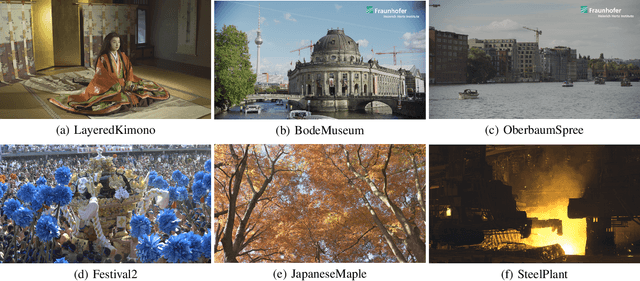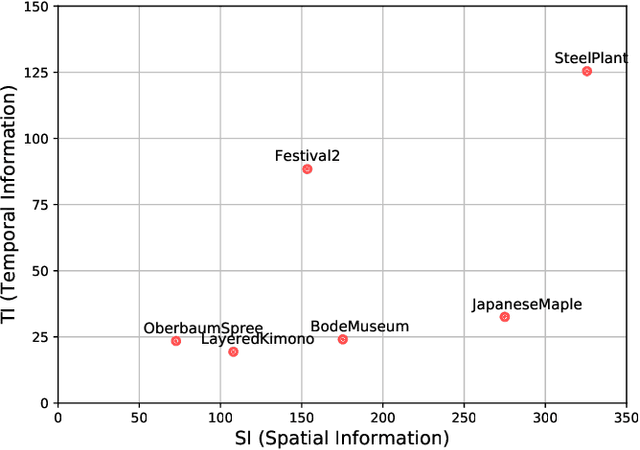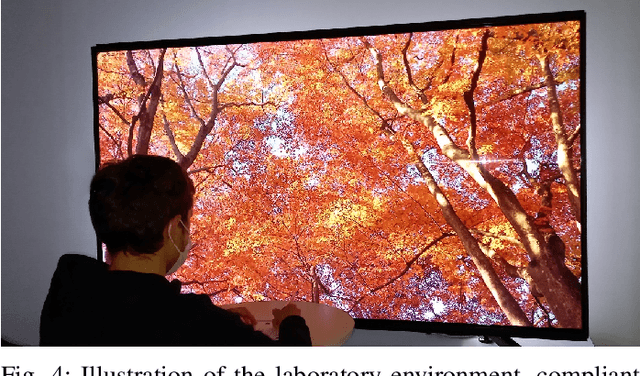Jerome Fournier
IRT b-com
Perceptual Quality Assessment of HEVC and VVC Standards for 8K Video
Sep 17, 2021



Abstract:With the growing data consumption of emerging video applications and users requirement for higher resolutions, up to 8K, a huge effort has been made in video compression technologies. Recently, versatile video coding (VVC) has been standardized by the moving picture expert group (MPEG), providing a significant improvement in compression performance over its predecessor high efficiency video coding (HEVC). In this paper, we provide a comparative subjective quality evaluation between VVC and HEVC standards for 8K resolution videos. In addition, we evaluate the perceived quality improvement offered by 8K over UHD 4K resolution. The compression performance of both VVC and HEVC standards has been conducted in random access (RA) coding configuration, using their respective reference software, VVC test model (VTM-11) and HEVC test model (HM-16.20). Objective measurements, using PSNR, MS-SSIM and VMAF metrics have shown that the bitrate gains offered by VVC over HEVC for 8K video content are around 31%, 26% and 35%, respectively. Subjectively, VVC offers an average of 40% of bitrate reduction over HEVC for the same visual quality. A compression gain of 50% has been reached for some tested video sequences regarding a Student t-test analysis. In addition, for most tested scenes, a significant visual difference between uncompressed 4K and 8K has been noticed.
Quality-driven Variable Frame-Rate for Green Video Coding in Broadcast Applications
Dec 29, 2020



Abstract:The Digital Video Broadcasting (DVB) has proposed to introduce the Ultra-High Definition services in three phases: UHD-1 phase 1, UHD-1 phase 2 and UHD-2. The UHD-1 phase 2 specification includes several new features such as High Dynamic Range (HDR) and High Frame-Rate (HFR). It has been shown in several studies that HFR (+100 fps) enhances the perceptual quality and that this quality enhancement is content-dependent. On the other hand, HFR brings several challenges to the transmission chain including codec complexity increase and bit-rate overhead, which may delay or even prevent its deployment in the broadcast echo-system. In this paper, we propose a Variable Frame Rate (VFR) solution to determine the minimum (critical) frame-rate that preserves the perceived video quality of HFR video. The frame-rate determination is modeled as a 3-class classification problem which consists in dynamically and locally selecting one frame-rate among three: 30, 60 and 120 frames per second. Two random forests classifiers are trained with a ground truth carefully built by experts for this purpose. The subjective results conducted on ten HFR video contents, not included in the training set, clearly show the efficiency of the proposed solution enabling to locally determine the lowest possible frame-rate while preserving the quality of the HFR content. Moreover, our VFR solution enables significant bit-rate savings and complexity reductions at both encoder and decoder sides.
 Add to Chrome
Add to Chrome Add to Firefox
Add to Firefox Add to Edge
Add to Edge